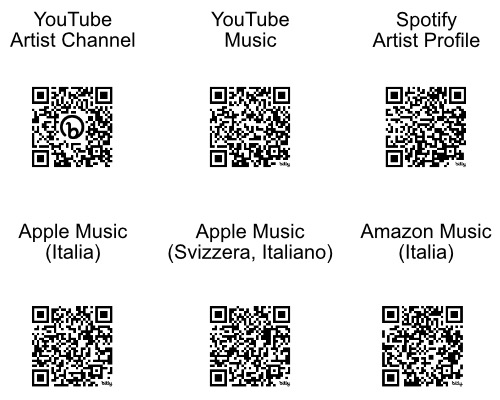Motion Picture Soundtrack Works
Merry Christmas Mr. Lawrence (Virgin, 1983)
“Merry Christmas Mr. Lawrence” is the soundtrack for the same title movie is directed by Nagisa Ohshima.
“Merry Christmas Mr. Lawrence” is the representative and the most famous song of Ryuichi Sakamoto, but unique and particular composition as him also. The sound is constructed by Fairlight CMI, synthesizers and string orchestra. The iconic theme is played by wine glass samples by CMI. From the interlude string orchestra follows, then it accompanies to the theme and the plays reach the climax and close.
“The Seed and the Sower” is an impressive and unique song. It begins a strange percussive riffs by a marimba sample and strings. Then the interlude, the key changed and synthesizer pad and strings play short tone passages. In the end, the key changed again, and a very impressive and grandiose oriental taste theme is played by strings and synthesizers.
“Father Christmas” is the variation of “Merry Christmas Mr. Lawrence”, features the theme, and is attached a vague synthesiser pad chords.
The modern also Classical, and oriental and western mixture style unique and sophisticated soundtrack. It includes the elements of symphony, chamber music, Minimal Music and Gamelan. Some tracks are English and Christian traditional songs.
Gohatto (Warner Music Japan, 1999)
“Gohatto (Taboo)” is the soundtrack for the movie directed by Nagisa Ohshima. The movie was made by the same combination of “Merry Christmas, Mr. Lawrence”, Nagisa Ohshima as the directer, Takeshi Kitano as an acter and music by Ryuichi Sakamoto.
“Opening Theme” is Sakamoto’s iconic theme played by Violin and Cello and Piano, with clock noise sample rhythm and synthesizer pad chord. A high tension also silent mood impressive song. Some tracks of this album are variations of this theme.
“Taboo” and “Gate” are abstract tracks are constructed by electronics percussions and noises.
“Suggestions” is minimal and experimental tracks associates gamelan and African traditional music.
“Murder” is fragmental collage track with Japanese percussion and bell instruments, shakuhachi and contrabass.
“Supper” is A Cappella of the African ethnic style.
“Funeral” is a track of bell instruments with synthesizer pad chords and solos like Ambient.
“Prostitute” is Gogaku, a style of Japanese traditional music with delay modulated taiko, koteki and bass drum.
“Ugetsu” is a variation of theme. Electronic pulse loops and sythesizer pad chords and solos are emphasized.
“Killing” is a very fearful and keen mood song with Fragmental piano, strings tremolos, koteki and bass drum.
This album is a challenging and unique soundtrack. The mixture of adaptations of Western instruments as piano and string instruments, Japanese instruments and synthesizers and samplers, ways of composition of Western and Japanese traditional music and today’s electronic music production, also there’s the Japanese taste. The movie depicts matters and incidents of the Bakumatsu period, the end of the Edo era and the period of revolution. But I feel the non-culture mood and a state of confusion. So this soundtrack describes the confusion and affairs of the era of revolution and the westernization. And this music heads for beyond the separation of state and cultures and common human sufferings.
L.O.L. (WEA Japan, 2000)
“L.O.L. (Lack of Love)” is a soundtrack album of an adventure game software for SEGA Dream Cast. Also the game is produced by Sakamoto and he made the concept and directed certain amount of content. The concept of the game is the game doesn’t fight and contend, and the evolution.
“Opening Theme” is the Sakamoto’s iconic style grandiose song like “Sweet Revenge” and “Amore”, with the good impressive theme, and recorded by piano and synthesizer pads. The theme part must be same as the second theme part of “Japanese Soccer Anthem”.
“Artificial Paradise” is a straight forward but sophisticated Techno track with Sakamoto’s characteristic pad chords, and synthesizer sequences of a marimba like tone.
“Transformation” is a simple miserable composition by a music box samples.
“Experiment” is a track associates fearless and wailing, like Ambient, is made by synthesizer pad and strings.
“Decision” is a brave song with rock drum sample loops with layers of pads.
“Storm” is a Techno or Trans track with sequences like computer signals (resembles them of “Pocket Calculator” and “Home Komputer” in “Computer World” by Kraftwerk).
“Ending Theme” is the alternative arrangements of “Opening Theme”. The tempo is slow, pad and strings sound is emphasized and dynamic, and entirely mood is more significant.
This album is a soundtrack for a video game, but the sophisticated and excellent music of Sakamoto.
Minha Vida Como Um Filme “my life as a film” (Warner Music Japan, 2002)
“Minha Vida Como Um Filme “my life as a film”” is a compilation of two motion picture soundtracks, “Derrida” and “Alexei and the Spring”.
“Derrida” is a movie features a French philosopher, Jacques Derrida. It’s the collage of his lectures, interviews, private shots and an analyse of his own interview by Derrida.
The “Derrida” part is consist of 22 fragmental tracks.
Some tracks is composed by piano hummer noises, plucks of piano strings, taps the piano body and other noises by piano.
Others are fragmental piano improvisations like the Second Viennese School, John Cage and Jazz. Sound collages of bell instruments, piano noises ; Improvisations of ethnic bell, pluck and percussion instruments ; Tracks of minimal piano backings, repetitions of a motif ; Experimental collages of environmental noises and electronic noises ; Improvisational synthesizer solo pieces ; A sacred choral like song by sythesizer pad.
The tracks are not directly connect to the content of the movie. Each track is fragmental, and entirely the tracks are a post-modernist collage. This soundtrack album must be an experiment as “deconstruction” of Jacque Derrida, to Sakamoto himself by music and sound productions.
“Alexei and the Spring/Opening Theme” is one of Sakamoto’s iconic style track. Vague and gentle synthesizer pad chords and piano melodies.
“the Fences” wood bell instruments song like Gamelan and African Ethnic Music.
“Echo of the Forest” is beautiful solo pad chord track.
Shining Boy & Little Randy (Warner Music Japan, 2005)
“Shining Boy & Little Randy (Original Motion Picture Soundtrack)” is a Japanese and Asian also Classical taste wonderful and Sakamoto’s sophisticated high quality soundtrack.
“Smile” is the theme of the movie, pure and cute also serious composition played by flute and synthesizer pads. Some tracks are variations of this track.
“Adieu” is piano backing only track with Sakamoto’s fine harmonies.
“Flying for Thailand” is a South-Eastern Asian taste variation of the theme.
“Tears of Fah” is a simple and minimal piece like Steve Reich and Philip Glass, by some string instruments and piano.
“Escape” is a Asian or Gamelan taste minimal track like Steve Reich with ethic wood mallet instruments.
“Oracle of White Elephant” is an experimental abstract Drone Ambient track with sythesizer pads and bell instruments.
“Adventure” is an ethnic also Music Theatre style song played by ethnic wood mallet arpeggios and fearful wood strings.
“Reunion” is a bright song associates “Pomp and Circumstance” by Edward Elgar.
“Date” is a pop taste beautiful and delicate song is consist of guitar arpeggio backings, electric piano and gamelan melodies.
“Stepfather” is a variant composition of the theme, a serious piano solo version.
“Elephant Show” is rare amusing and funny song of Sakamoto, which features harmonica solos.
“Affirming” is a grandiose variant composition of the theme for an orchestra.
A good soundtrack by unique and sophisticated style and techniques of Sakamoto.
Tony Takitani (commmons, 2007)
“Tony Takitani” is a soundtrack for a film directed by Jun Ichikawa, based on the short story by Haruki Murakami. The story describes the life of solitary, excellent and sober man.
According to the story, this soundtrack is constructed by minimal piano solo pieces. The main songs are “DNA” and “Solitude” and their variations. Sakamoto prepared themes and motives, and recorded songs by watching the movie with out sound.
“Solitude” is the iconic style composition of Ryuichi Sakamoto, but it includes the element of Minimal Music like Philip Glass and Steve Reich. An left hand arpeggio based song, and impressive sorrowful theme repeatedly emerges. The song expresses the personality of Tony Takitani, his life and the entire theme of this movie.
“DNA” is a minimal piano backing song, and there are Sakamoto’s iconic sophisticated echoes of chord and harmony structuring.
“Fotografia #1” and “#2” are fragmental and bright piano piece.
A very good and light soundtrack album, also a nice simple and bit experimental piano solo album.
The Revenant (Milan Records, 2016)
“The Revenant” soundtrack is consist of string ensemble and synth pad music is influenced by today’s Ambient and Drone music. Some songs are collaborated with Alva Noto (Carsten Nicolai) and Bryce Dessner.
“Carrying Glass” is a vague also impressive song consist of noises, strings and synthesizer pad.
“Killing Hawk” is a peculiar song with bold synth pad base, keen high tone synth pad and its reflection and strings chord hits.
“Discovering Buffalo” is very abstract and beautiful song with noises by Alva Notem and synth by Sakamoto and strings.
“Hell Ensemble” is a significant and minimal string ensemble long note chords only song.
“Church Dream” is a significant, sacred and sorrowful string ensemble song.
“Reventant Theme 2” is the alternate theme for the movie. Icelandic composer-cellist Hildur Guðnadóttir plays the theme and melodies, and Sakamoto plays simple piano backings.
“Out of House” is a beautiful sythesizer pad solo and low tone pad chords Ambient track.
“Cat and Mouse” is a song of combination of three musicians. A mixture of collages of noises, string ensemble and Frantic percussions.
“Revenant Main Theme” is theme which is played by cello of Hildur Guðnadóttir, atmospheric pad companies and breath samples attached. Then in the end fragmental piano follows.
“The End” is a significant and minimal variation of the theme, the main instrument is string ensemble, and pads and noises attached.
“The Revenant Theme (Alva Noto Rework)” is the fine remix version of theme by Alva Noto. The materials such as strings, pads and noises are reconstructed as a musical work to listen.
The impressive, experimental and atmospheric soundtrack includes elements of Ambient, Drone, Contemporary Classical and Post-classical Music.
My Tyrano: Together, Forever (Avex Entertainment, 2019)
“My Tyrano: Together, Forever” is the soundtrack for the animation movie by Tezuka Productions, and the joint production between South Korea, Japan and China, released in 2018, Korea.
Despite the soundtrack for an animation, it’s sophisticated and advanced music by Ryuichi Sakamoto. There are fine chord works and melodies of Sakamoto, and his iconic tones and moods.
This album includes various types and tastes of tracks. For example, bright and cute compositions like “Self Portrait”, tracks are influenced by Minimal Music of Steve Reich and Terry Reilly and Gamelan, serious orchestral works, tracks associates fearless and struggle, experimental works like Ambient, Drone and Jazz improvisation, sacred music like baroque music and classical music, African Ethnic Music, usual soundtrack need for a movie. I think the entire mood of this album resembles “Illustrated Musical Encyclopaedia” (1984).
It’s not only an animation soundtrack, but also a very good and satisfactory music album equal to a full solo album. Yet, I think regrettable that length of each track is very short from one to two minutes…
Resources and Links
Music Review
Ryuichi Sakamoto Piano Solo & Piano Trio Works
Music Review
Ryuichi Sakamoto Electronic, New Age & Electronica Works


